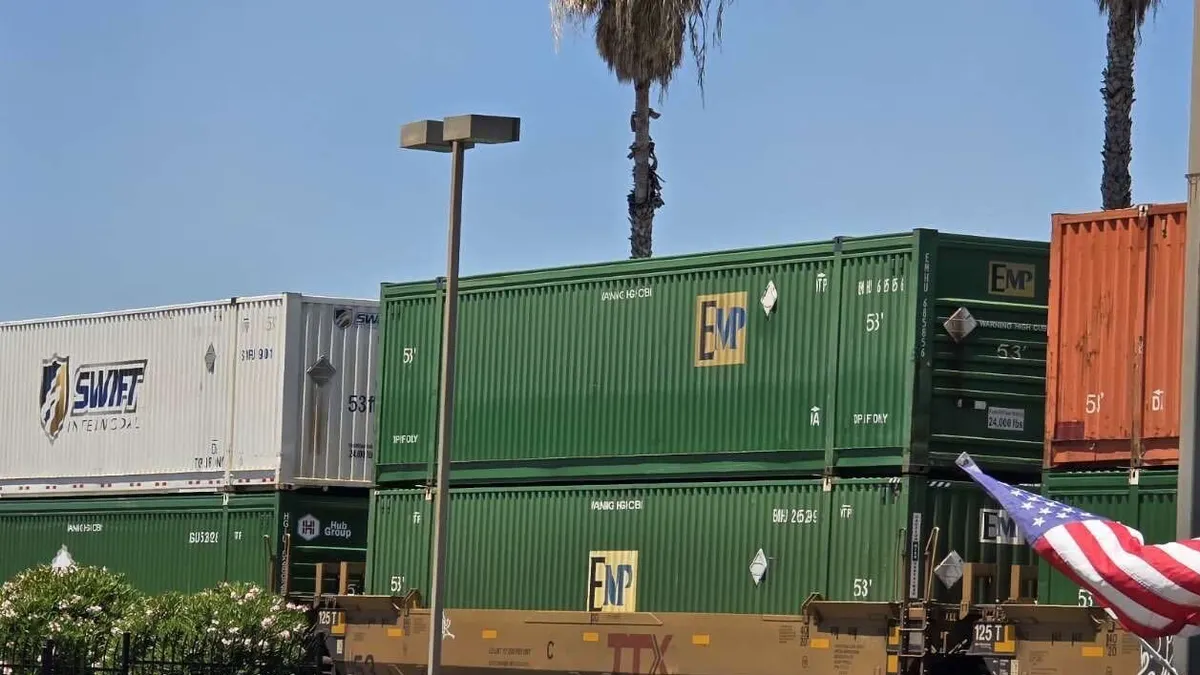The Trump administration's ongoing tariff actions, combined with current economic conditions, continue to cloud freight rates in the trucking industry.
Truckload freight rates remained under pressure from excess capacity in the market, while less-than-truckload is seeing a year-over-year positive change as carriers manage profitability, according to the TD Cowen/AFS Freight Index released July 15.
"Despite plenty of international travel by world leaders, trade policy remains an unsettled picture and businesses are opting for a wait-and-see approach and delaying spending decisions,” Andy Dyer, CEO of AFS, said in a press release. "With no catalyst to ignite demand, some carriers are buckling under the pressure of unrelenting low volumes while others are deploying all available mechanisms to capture revenue."
Excess capacity in the truckload market
The index projects a tenth straight quarter with truckload rates at or near the bottom. Q3 rates are expected to be at 5.6% above the 2018 baseline, reflecting a 0.4% quarter-over-quarter decline.
Taking a closer look, the truckload market is stuck in a rut, again, and excess capacity is a key driver.
Excess capacity can be traced back to the COVID-19 pandemic, when a number of carriers entered the market due to increased demand, Aaron LaGanke, VP of freight services at AFS, told Trucking Dive in an email.
As time passed, inflation skyrocketed, economic uncertainty grew and demand increased, leading to too many carriers to meet soft demand, LaGanke said. “And while a number of carriers have left the marketplace, these have mostly been very small carriers that haven’t cut too deeply into the excess capacity,” he added.
Excess capacity and low rates will continue unless there is a larger industry contraction or a growth in demand, LaGanke said.
One way the truckload market could experience some ease is through the regulatory guidance for stricter labor and language standards for truck drivers. The policy from the Trump administration “could constrict the supply of truck drivers, which could in turn limit truckload capacity and influence supply and demand pricing dynamics in the market,” he said.
LTL carriers focus on profitability strategies
While the LTL market is also being impacted by the same global trade and economic conditions, carriers are holding firm on pricing, in turn creating only slight declines in costs per shipment. Weight per shipment declined 5.1% YoY, but cost per shipment fell by 2.9%, per the release.
In a low-demand environment, LTL carriers are focusing on profitable lanes, contractual relationships and reliable freight, rather than chasing volume with discounted pricing, LaGanke said. These strategies are showing positive results as the TD Cowen/AFS LTL Freight Index report is expected to reach 65.9% from its 2018 baseline, marking a 1% year-over-year increase. The increase will also mark the seventh consecutive quarter with positive YoY changes, per the report.
"The continued resilience of the rate per pound index shows the effect of carrier pricing discipline, and the upcoming NMFC transition to a density framework should equip carriers with another method to tightly manage freight classification and pricing,” LaGanke said in the release.
The National Motor Freight Traffic Association classification overhaul kicked off on July 19, and while it adds more pricing discipline and transparency, it’s still too early to see the actual impact on the LTL market, Mich Fabriga, VP of LTL Pricing at AFS, said in an email.










